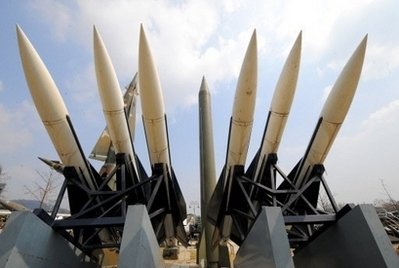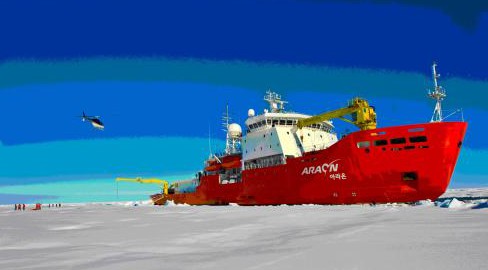40 years ago American president Ronald Reagan delivered an address to his nation during the height of the Cold War which was famously nicknamed the `Star Wars´ speech. He proposed that the United States begin a Strategic Defense Initiative, the construction of ground and space based systems to defend it against nuclear ballistic missiles. Canada was invited to join the program, but believing the program to be too costly and that participation would provoke the Soviet Union, Prime Minister Brian Mulroney declined. Since the end of the Cold War, Canada has continued to abstain from participation in the missile shield. In 2005, Canada rejected a second proposal. Strong public dislike for the Bush administration and its missile project prevented Prime Minister Martin from enhancing the defense umbrella by installing an X-band radar for surveillance missions.
Despite the failures to date and reservations about the technology, Reagan’s conviction that nuclear defense was a worthy investment that would diminish the threat of nuclear war has remained a pillar of US defense strategy. In fact, the missile shield has gained supporters across Europe, in the Middle East and in the Asia-Pacific region. In 2010, NATO announced the protection of Allied territory and populations as a core responsibility. To fulfill this commitment NATO relies on the Active Layered Theatre Ballistic Missile Defense (ALTBMD) program, which links Allied and US systems into a common missile defense architecture. Put simply, the missile shield of today is a global network of systems and it is expanding. On March 15th, it was announced that the United States would construct an additional 14 ground based interceptors at Fort Greely in Alaska by 2017. In Canada, this development has reawakened the debate on participation in the missile shield.
SDI was originally designed as defense against nuclear weapons deployed by the Soviet Union. Today the nuclear defense network aims to deflect attacks from North Korea or Iran. Both nations are becoming increasingly aggressive states and both are intent on strengthening their nuclear weapons capabilities. According to a Pentagon report presented to Congress in 2012, North Korea continues its ambitious program to develop nuclear-armed intercontinental ballistic missiles, bringing it closer to its goal of striking the United States. A separate report in 2012 prepared by the Congressional Research Service revealed that Iran could be capable of testing an intercontinental ballistic missile by 2015. As unpredictable and hostile states, North Korea and Iran threaten the global community and ultimately international peace.
Canadian proponents of joining the US ground based missile defense (GMD) argue that contributing to the missile shield in North America would provide Canada with a measure of protection against these rogue states. Canadian sovereignty and national interests, they assert, would not be compromised. Initiatives like NORAD, a Canadian-American military partnership that provides aerospace warning and defense, demonstrate that collaborative efforts are possible. However, its ability to contribute to the safety of Canadians is limited. After all, the missile defense system is under the command and control of US Northern Command (USNORTHCOM). This means that Canadian members of NORAD can issue warnings of an impending attack on the continent but cannot participate in decisions regarding interception. Alternative US warning systems are likely to develop and will consequently claim investments otherwise spent on NORAD. Advocates of missile defense argue that for NORAD to remain relevant, Canada needs to participate in the missile shield.
Recent Canadian media alleges that participation would be cost effective. At first glance, the accumulation of US investments over the years suggests that less is required from NATO members and individual nations. The current proposal for the radar base at Goose Bay in Newfoundland also relegates substantial costs to the US. Critics debunk these claims. As part of sequestration, the US is expected to make significant spending cuts over the next ten years. The intended total is $ 1 trillion. Its willingness to shoulder the cost of the radar site could disappear and Canada may be faced with requests for a larger contribution.
While arguments on both sides appear to hold merit, they also lack nuance and context which are critical for a full appreciation of what the real issues are. A larger role for NORAD in missile defense cannot not be considered exclusively with regard to exposure to security threats. Rather, it should be understood within the context of Canada’s responsibility and commitment to promote international peace and security.
Finally, the costs of participating in missile defense need not be astronomical. Canada could participate through the backdoor of NATO by joining and contributing to their defense program (ALTBMD). Doing so would not defend Canada’s territory. It would however, demonstrate a strong commitment to the safety of our European and American allies. Protecting European populations through NATO could be the stepping-stone to making the difficult decision about the best way to protect Canadian citizens. Furthermore, Canada would not be reduced to relying on the goodwill of America to defend the entire continent. By strengthening the alliance, Canada can ensure its resolve to do so.
As it stands Canada has been exerting great caution in deciding whether or not to join the US missile shield. However, the debate has been renewed and arguments for and against participation have acquired greater depth. It is critical that it remain vigorous. Only with a clear understanding of the costs and benefits of participation can Canada move closer to making an informed security decision.




